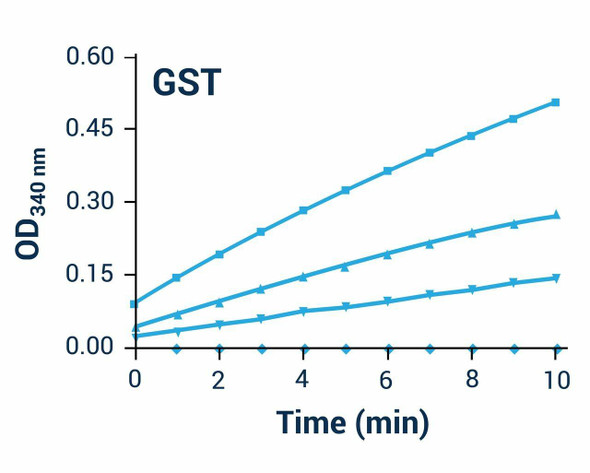Lipase Activity Assay - Information
Assay Genie's Lipase Assay (Colorimetric) is based on an improved dimercaptopropanol tributyrate (BALB) method, in which SH groups formed from lipase cleavage of BALB react with 5,5'-dithiobis(2-nitrobenzoic acid) (DTNB) to form a yellow colored product. The color intensity, measured at 412 nm, is proportionate to the enzyme activity in the sample.
Applications
For quantitative determination of lipase activity.
Lipase Activity Assay - Key Features
- Sensitive and accurate. Linear detection range 40 to 1600 U/L lipase activity in 96-well plate assay.
- Convenient and high throughput. The procedure involves adding a single working reagent, and reading the optical density at 10 min and 20 min at room temperature or 37°C. Can be automated to process thousands of samples per day.
Lipase Activity Assay -Data Sheet | |
| Method of Detection | OD412nm |
| Detection Limit | 40 U/L |
| Samples | Serum, plasma, saliva, urine etc |
| Species | All |
| Protocol Length | 20 min |
| Size | 100 tests |
| Shelf Life | 12 months |
More Details
LIPASE catalyzes the hydrolysis of ester bonds on the glycerol backbone of a lipid substrate. In humans, pancreatic lipase is the key enzyme responsible for breaking down fats in the digestive system by converting triglycerides to monoglycerides and free fatty acids. Human pancreatic lipase and its related protein 2 are the main lipases secreted by the pancreas. In acute pancreatitis, lipase levels can rise 5 to 10-fold within 24 to 48 hours. Increased activities have also been associated with pancreatic duct obstruction, pancreatic cancer, kidney disease, salivary gland inflammation, bowel obstruction, and other pancreatic diseases. Decreased levels may indicate permanent damage to lipase-producing cells in the pancreas. Simple, direct and automation-ready procedures for measuring lipase activity are very desirable.












